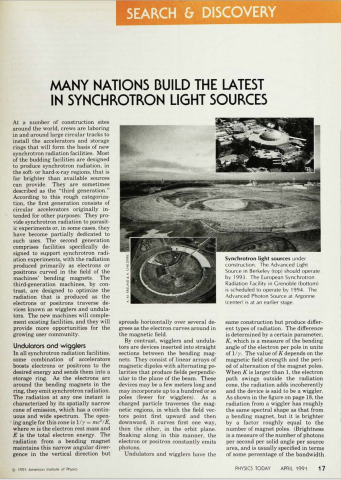Many Nations Build the Latest in Synchrotron Light Sources

At a number of construction sites around the world, crews are laboring in and around large circular tracks to install the accelerators and storage rings that will form the basis of new synchrotron radiation facilities. Most of the budding facilities are designed to produce synchrotron radiation, in the soft- or hard-x-ray regions, that is far brighter than available sources can provide. They are sometimes described as the "third generation." According to this rough categorization, the first generation consists of circular accelerators originally intended for other purposes: They provide synchrotron radiation to parasitic experiments or, in some cases, they have become partially dedicated to such uses. The second generation comprises facilities specifically designed to support synchrotron radiation experiments, with the radiation produced primarily as electrons or positrons curved in the field of the machines' bending magnets. The third-generation machines, by contrast, are designed to optimize the radiation that is produced as the electrons or positrons traverse devices known as wigglers and undulators. The new machines will complement existing facilities, and they will provide more opportunities for the growing user community.